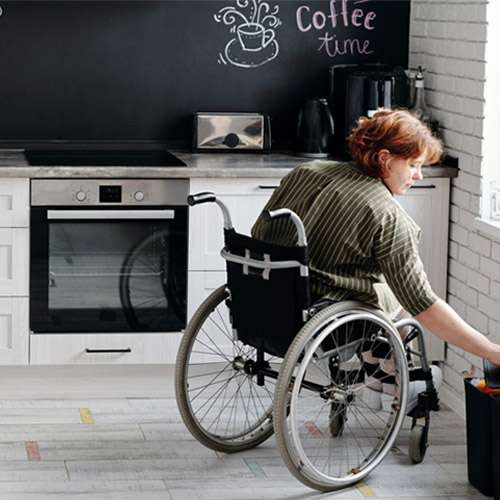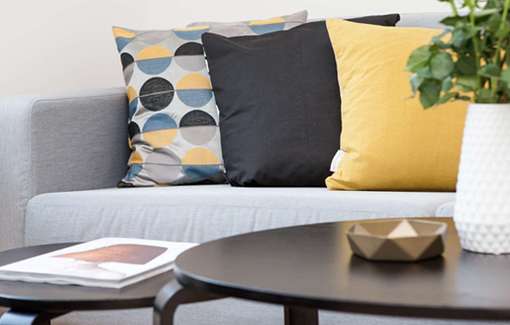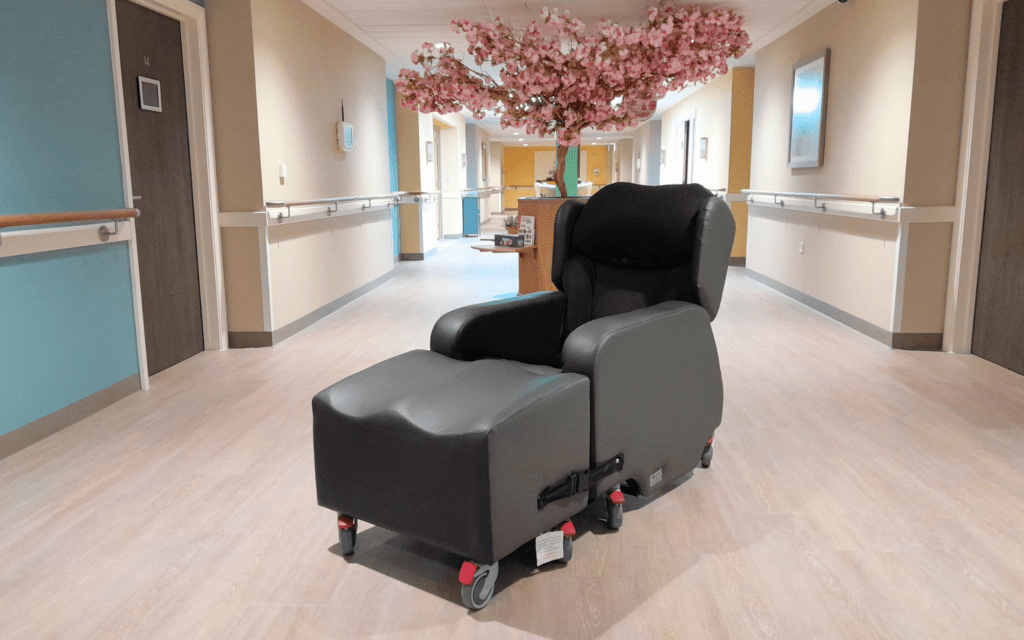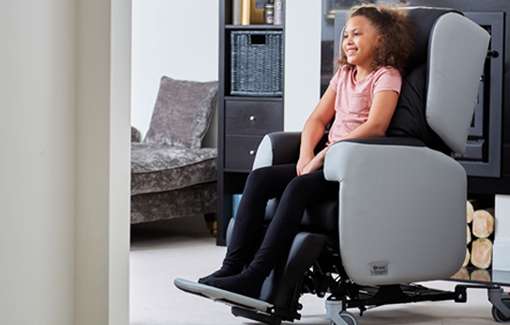What Are Mobility Aids?
Mobility aids are device or pieces of equipment that are designed to aid walking or general movement for people with mobility issues. This broad definition means that the range of people that could need mobility aids can be expansive.
Jump straight to…
-
- When Should Mobility Aids Be Used?
- Who Needs Mobility Aids?
- Mobility Aids For The Elderly or Disabled
- Mobility Aids For Walking
- Walking Frames
- Rollators
- Benefits of Walking Frames & Rollators
- Walking Sticks & Crutches
- Folding Canes
- Manual & Electric Wheelchairs
- Mobility Scooters & Power Chairs
- What is the Difference Between A Mobility Scooter and An Electric Wheelchair
- Mobility Scooters Distance, Speed & Regulations
- Should I Get a Mobility Scooter or an Electric Wheelchair
- Adaptive Equipment For Wheelchair Users
- Mobility Ramps
When Should Mobility Aids Be Used?
If an individual is having difficulty or requires support while moving around or walking, then a mobility aid might be ideal for their situation. A mobility aid for an elderly or disabled person would aim to make that person’s life more comfortable by assisting in their movement.
Regardless of the level of support required, whenever a person needs a little more help moving around so they can continue doing the day-to-day activities they are used to, mobility aids can help be that extra bit of help.
Mobility aids can vastly improve a person’s life and help in aiding independence for people as they can remove the need of requiring another person to help an individual everyday tasks that an individual had been used to undertaking on their own.
For these reasons, finding the correct mobility aid for a persons’ situation is important as a user can hold on to their autonomy and maintain independence.
Who Needs Mobility Aids?
Mobility aids can be used by anyone who needs one, the situations where a person is more likely to require one vary by population. They are mostly required by people experiencing frailty and balance issues, these are common among the elderly and disabled populations.
Disability, as defined by the Equality Act 2010 is “a physical or mental impairment that has a ‘substantial’ and ‘long-term’ negative effect on your ability to do normal daily activities.”
Other definitions centre around Activities of Daily Living (ADLs) which are defined as “fundamental skills typically needed to manage basic physical needs”.
With this definition, disability can be measured as ‘Limitations on Activities of Daily Living (LADL), and affects 40% of people aged 60, and 75% of those aged 80+. The disability is described as ‘severe’ for 20% of people aged 60 and 50% of those aged 80 and above.
With such large parts of the public within these definitions of disabled, and 55% (6.9 million) of disabled individuals reporting a mobility impairment; this number rises to 70% when looking at older adults (state pension age and above).
Mobility is also an ever-present issue within the elderly community with one of the main forms of disability in older age being issues with mobility.
Mobility Aids For The Elderly Or Disabled
Finding the correct mobility aid for an elderly or disabled person is dependent on several factors including the needs of the user and the situations the mobility aid will be used in. Mobility aids for the elderly usually tend to be geared around supporting a user that needs some extra help with stability.
These can range from walking aids that support an individual when active to adaptive solutions for everyday activities around the home.
As everyone’s situation is unique, mobility aids can range from a ramp helping a person to navigate steps into their home; to a powered wheelchair required to get around comfortably.
Mobility Aids For Walking
Walking aids for disabled users and the elderly or such as rollators & walking frames are ideal if an individual needs some help balancing while getting around. Designed to assist a person while they walk, they are crafted with durable frames meant offer an individual with partial support when standing & moving around.
Walking Frames
A walker or walking frame is a device that aids walking by providing added support and stability to help maintain balance while walking.
Walkers are most used as a walking aid for the elderly because they are commonly required for age-related mobility issued like frailty.
Walking frames can be ideal for the elderly as well as disabled users as they offer support while enabling all-important confidence through independence.
If you have issues with balance or weakness when standing, you should not use a rollator and should instead opt for a walking frame.
Rollators
A rollator is essentially a walking frame with wheels, but unlike a traditional walking frame, it does not need to be lifted off the ground when you walk. Great for getting around outside, it comes with handy brakes for added peace of mind.
They should not be used to actively support body weight, as they are liable to slipping out from under the individual if too much weight is put onto the frame.
Some rollators come with seats and are ideal if you can balance yourself but may frequently need a place to sit & rest. They can also be used to store necessities such as oxygen tanks or any other equipment you may have with you.
Whether you are indoors or out and about, walking frames will add that extra bit of stability and support as they do not have wheels.
Benefits of Walking Frames & Rollators
Using a walking aid can massively reduce the likelihood of a trips & falls, this is an extremely important factor as 30% of people over the age of 65 fall at least once a year and this only increases for those over 75.
Walking Sticks & Crutches
A simple, low-cost way to aid your mobility, walking sticks and crutches are so widely used across the world because of their ease and effectiveness. Wonderfully straight forward, they will help a person walk safely whether indoors or outdoors.
For someone who has okay stability but which sometimes waivers, walking aids such as crutches or walking sticks can help reduce falls and provide a person with the confidence that comes from maintaining independence.
Folding Canes
A folding (or telescopic) cane is ideal for when you only need occasional use, they can easily be stored away when not in use.
Manual & Electric Wheelchairs
Used by people who should not be putting weight on their lower limbs or who are unable to walk, wheelchairs can be more suitable than walkers or rollators for travel over longer distances.
Manual wheelchairs can be pushed by the user, or another person. You can also opt for an electrically powered wheelchair, there are now more and more electrically powered wheelchairs available.
Specialised wheelchairs are available too if an individual’s condition requires it, these specialist wheelchairs include standing wheelchairs, which ensure a user stays in an upright position; and sports wheelchairs which have been specifically developed for use during certain sports.
Mobility Scooters & Power Chairs
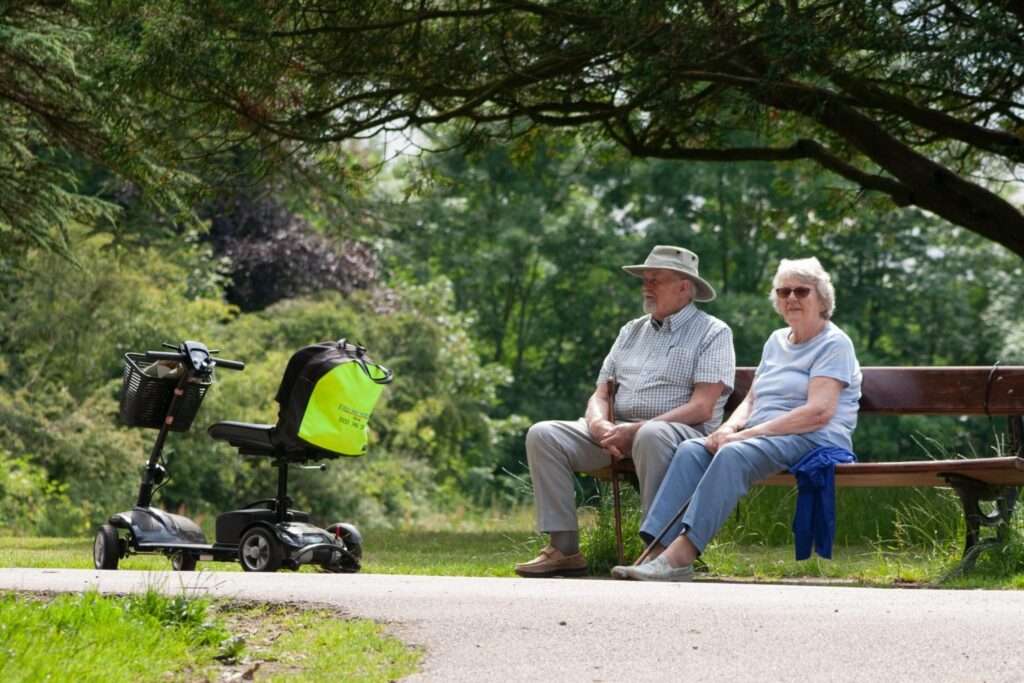
A scooter is a versatile mobility aid that can help with moving around outside.
Mobility scooters and power chairs are designed to get you around independently if you are suffering from mobility issues.
The main benefit of a mobility scooter is that it makes getting around much easier. They can be used across various surfaces and increase independence & confidence.
If opting for a mobility scooter or power chair, you should consider how accessible your current surroundings are and if an individual on a mobility scooter or power chair would be able to get around.
Accessibility is only one thing to consider, if purchasing a mobility scooter or power chair, you should think about:
- Safety features
- Accessibility
- Weight
- Storage & charging
- Insurance
What Is The Difference Between A Mobility Scooter And An Electric Wheelchair
The main differences between an electric wheelchair and a mobility scooter are in the operation & manoeuvrability on offer.
Electric wheelchairs are controlled using an easily accessible, airplane style joystick on the armrest, this requires less upper body mobility from a user but still provides full control of the wheelchair.
Mobility scooters are controlled using a boat style tiller handle on the front that requires both hands to control.
Electric wheelchairs are easier to manoeuvre because the turning circle is smaller and allows greater movement. It is possible to find mobility scooters designed for indoor use and have a smaller than usual turning circle, but you will generally require a good amount room space if you wish to use a mobility scooter indoors.
Electric wheelchairs are designed with the idea that a user will spending a lot of time in them, because of this, they offer more seating options for added comfort, like reclining the backrest and raising & lowering the footrest.
Mobility Scooter Distance, Speed & Regulations
Another difference between electric wheelchairs & mobility scooters is the speed & distance they offer.
UK government rules state that you can only drive on the road in a class 3 mobility scooter and the maximum speed is 8mph when on a road, with a top speed of 4mph off-road. A user is also required to have an amber light for visibility.
There are some driving restrictions, you cannot use a mobility scooter on motorways, bus lanes, or cycle-only lanes. The UK government also recommends that you avoid using dual carriageways as they can reach speeds of 50mph.
Should I Get A Mobility Scooter Or An Electric Wheelchair
Choosing between an electric wheelchair or mobility scooter really depends on what you intend to use it for, the ideal mobility aid is the one that provides ideal support and independence to a user.
While electric wheelchairs have more comfort options, are generally more manoeuvrable, and can be used outdoors, they are better suited to flat, level surfaces with occasional use on slight inclines like accessibility ramps.
Mobility scooters need more upper body mobility to control and have a larger turning circle, they are generally designed with longer distance travel in mind, they reach higher speeds and can be used in more environments.
If you require travel over more difficult terrain and even hills; a mobility scooter will provide a user with the required power and stability.
Adaptive Equipment For Wheelchair Users
If you are in a wheelchair, there are certain pieces of equipment that can make living that little bit easier.
In a non-adapted home, one of the biggest obstacles to a wheelchair user are the stairs; and short of moving home, there are only a few solutions that can make this user friendly.
Though most of these methods would require larger home adaptations that may be more expensive, there are some less expensive adaptive equipment for wheelchair users available.
If you require a wheelchair but are also able to stand & move independently for periods of time, a grab rail or banister is a low-cost adaptation that can aid day-to-day activities. They allow a person to get up and down stairs without requiring help from someone else and thus are great for aiding that all important independence.
If you are an active wheelchair user, take a look at our overview of the powered add-ons for active wheelchairs.
Mobility Ramps
An accessory to a wheelchair or scooter, ramps help to make it easier to get up kerbs or steps for someone using a wheeled mobility aid.
They can be fixed in place wherever you live, or they can be portable allowing you to take them out an about, widening the range of places you can get around easily.
The range of mobility ramps for the elderly available is large and includes:
- Threshold ramps or ‘door wedges’
- Lego-style threshold ramps
- Suitcase ramps
- Trifold ramps
- Roll up ramps
- Folding ramps
- Modular ramps
- Telescoping ramps
- Rollable ramps
- Modular ramps
- Permanent ramps
Read more on the types of wheelchair ramps available and which is best for your unique situation here.
If you would like a more individualised touch, please fill in the below contact form or visit our showroom where we can offer an in-person assessment.





